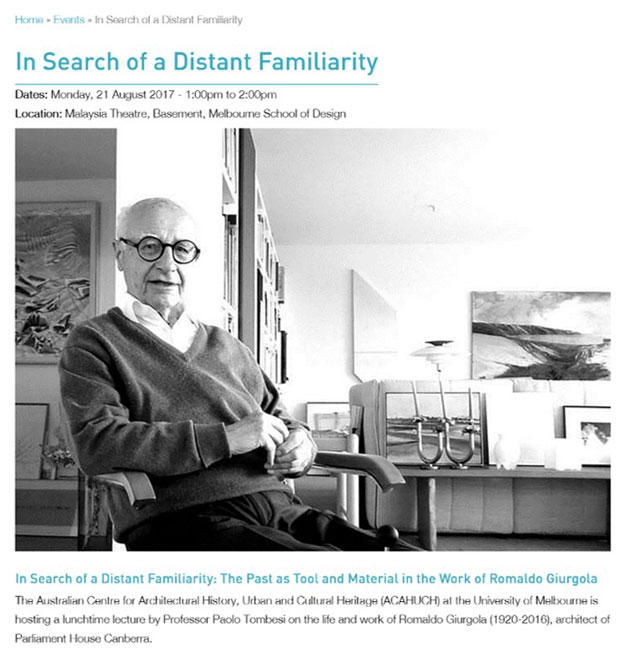
In the course of a career lasting more than 60 years and dotted with professional achievements and disciplinary recognitions with a few equals, Romaldo Giurgola came across (or set out to cross) profoundly different cultures and architectural landscapes, from Italy to America, America to Scandinavia, Scandinavia to Australia, Australia to Asia.
Though very heterogeneous in terms of program, commissioning and also formal results, the work produced along this epochal path retains a strong overall organic nature. On the one hand, it reflects Giurgola’s typical way to interpret the social and productive context of his physical interventions in a rational manner. On the other, it betrays the presence of a strong classical culture – even this idiosyncratic in many ways – continuously filtered and enriched by Giurgola’s own life experience and brought to bear on every architectural decision.
Many of the buildings thus conceived generate a paradox in that, while they seek to define a kind of natural history for their environmental presence and development, they invariably owe their existence to the visionary power of an ultimately congenital foreigner.
In a way, it is Giurgola’s capacity to give form to collective (and therefore historical) building experiences ‘from the outside‘ that confers the ethical and practical academicism embedded in his biography a formidable import, particularly within the contemporary disciplinary landscape.
After all, in an architectural world such as today‘s, where the thinness of geographic boundaries facilitates the prevalence of image over substance, Giurgola’s productive/conceptual practice suggests possible strategies for those still interested in exploring the true meaning and possible relevance of professional nomadism, vis-a-vis cultural roots or attachments too important to be undervalued or, worse, disowned.

Link image (previous page): Melbourne School of Design, TOMBESI (2017); bottom images: design and building tools, TOMBESI (2018)